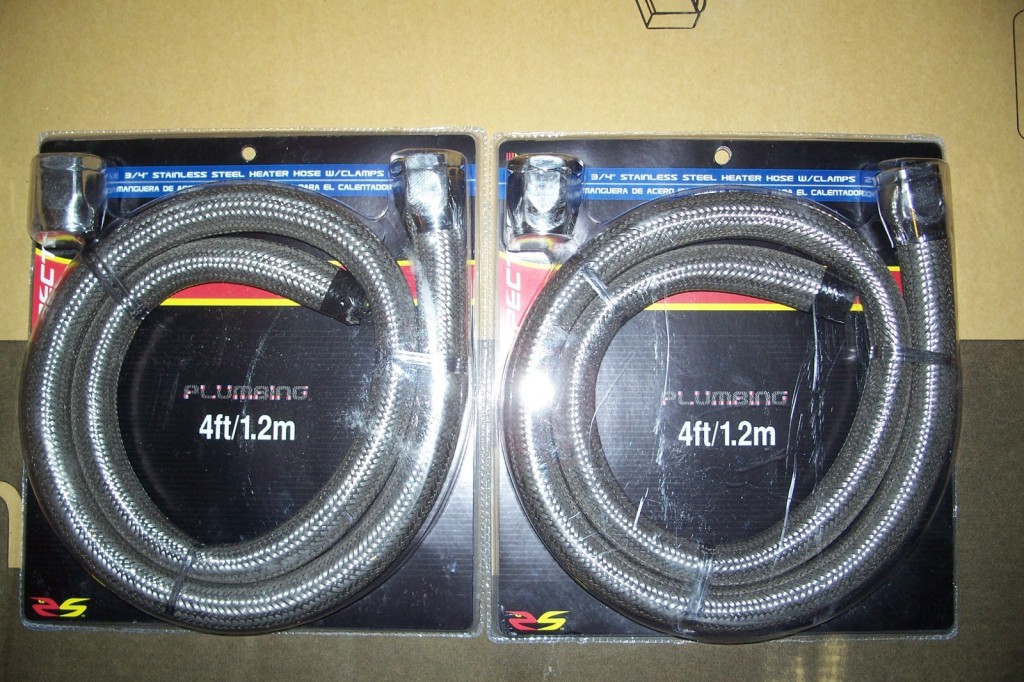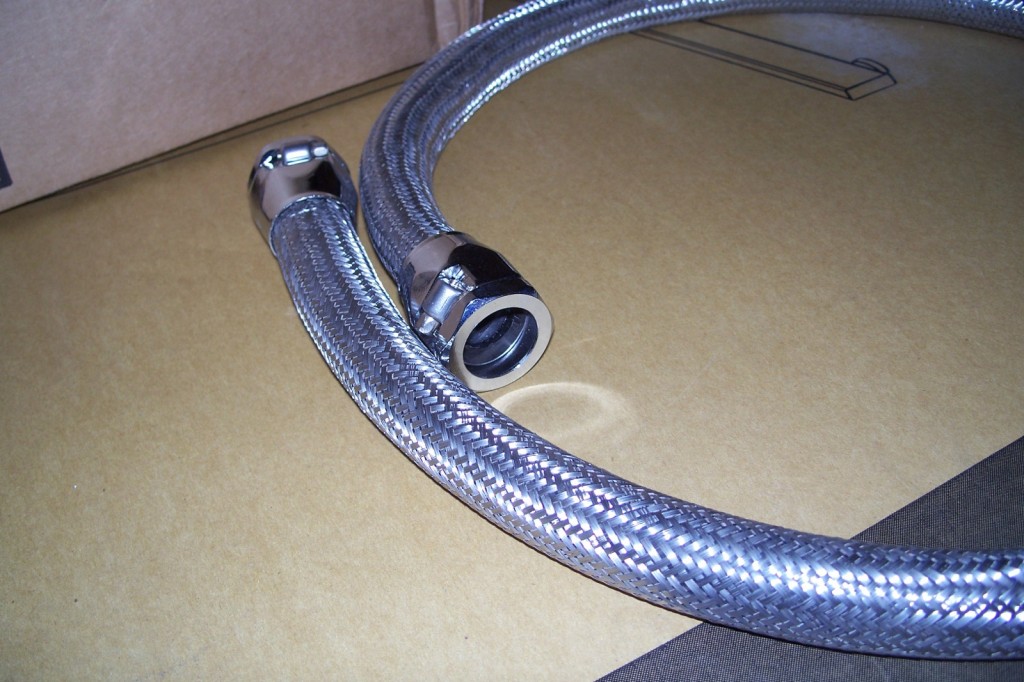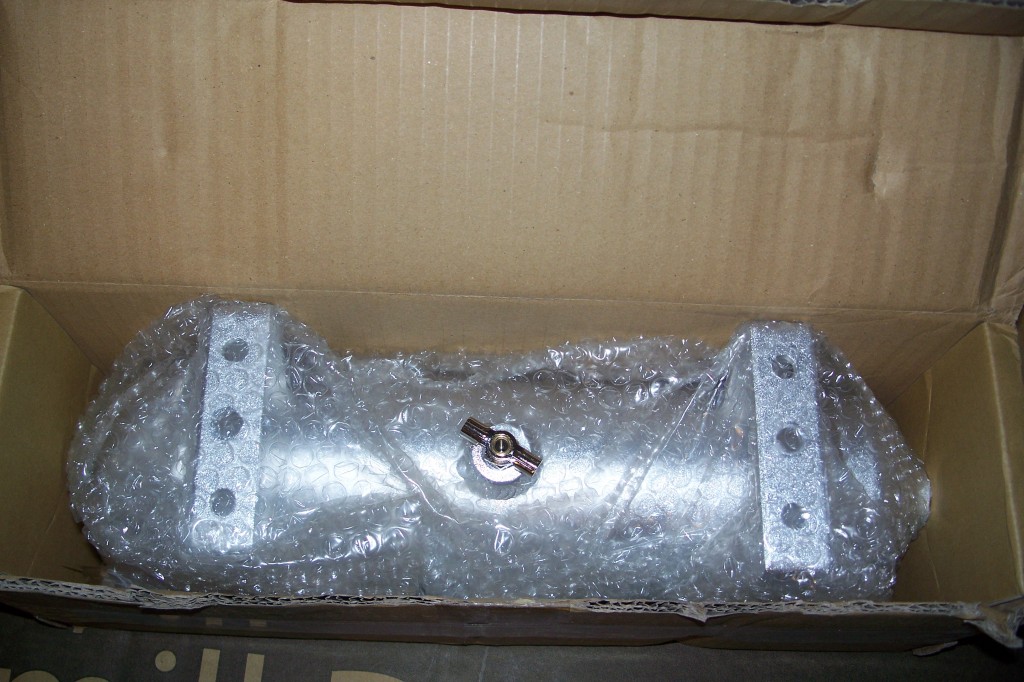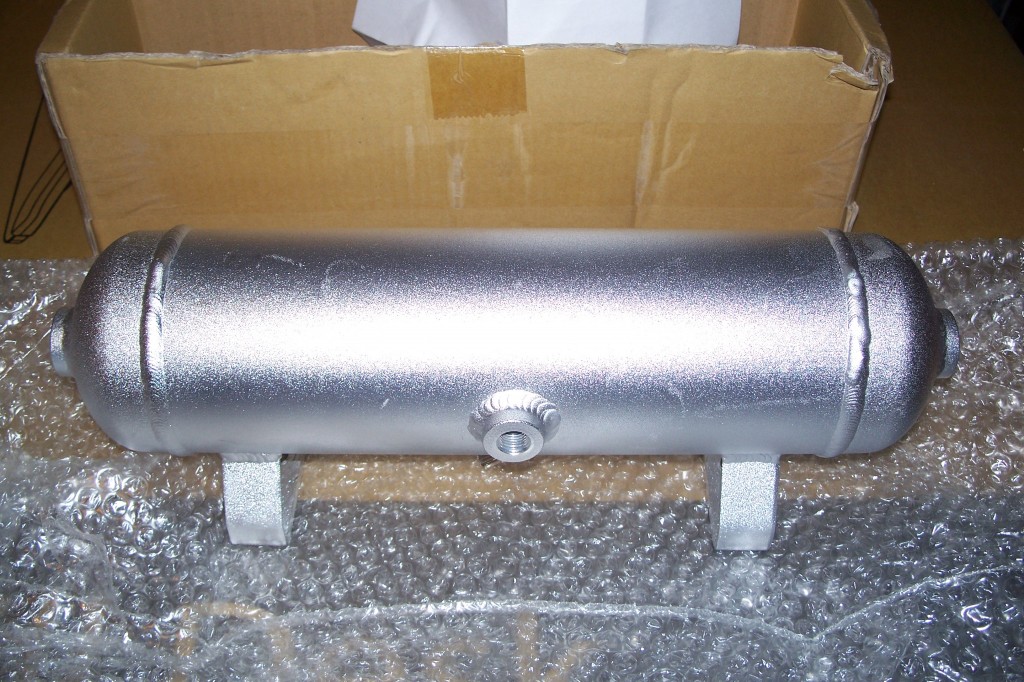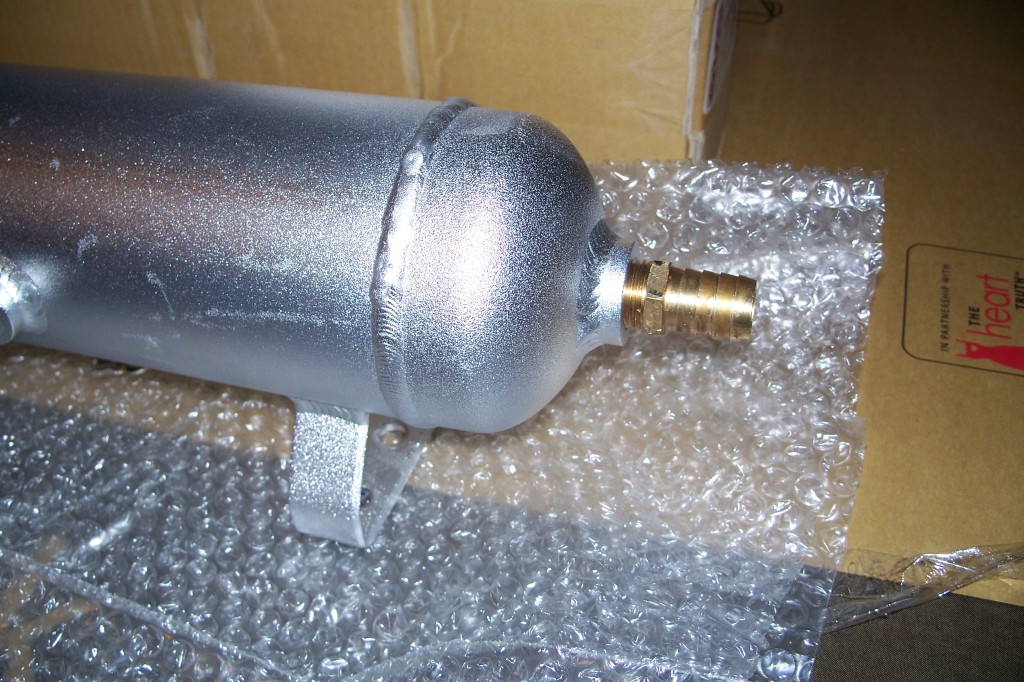This morning I took the front clip off my STS-V once again to replace the intercooler heat exchanger hoses with Spectre braided stainless sheathed hoses and then retest.
I did a first shake-down test run, then let the car sit and heat soak, then did another 20 min test capture.

The chart shows intake air temperature 2 (IAT2) after the supercharger over time during a 20 min test drive. The spikes on the chart are acceleration runs.
Today’s weather is overcast, with 72F air temperatures, similar to the historical data file for the OEM capture. What this suggests is that the S3TC heat exchanger in series with the OEM heat exchanger acts to lower IAT2s around 10F. The end of the test was curtailed due to a traffic stackup; I stopped scanning and capturing data to save time on conversion.
Because today’s temps are similar to the historical air temps, I compared today’s run to the historical data without modification.
Overall the new S3TC Heat Exchanger results continue to be good. The Spectre hoses are on and do appear to have better success at avoiding kinks or crimps than the rubber heater hoses did.
Here is a zoom-in on the acceleration run today, showing the trend for IAT2 vs RPM and Speed.
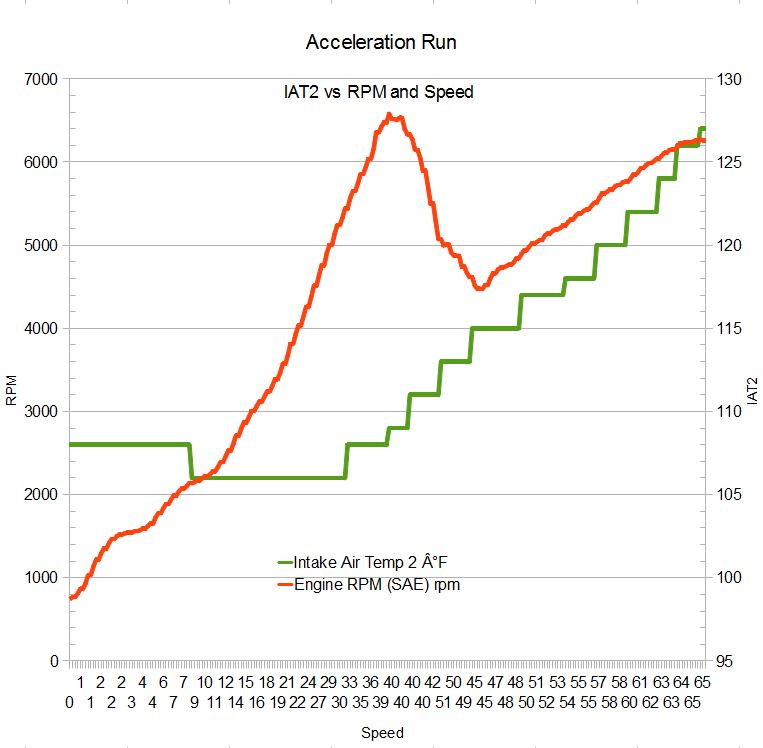
In this graph we see initially there is actually a decrease in IAT2, as the throttle opens, all the flow goes through Supercharger as opposed to the bypass, and the intercooler is at max cooling. As the supercharger continues to dump heat into the system, the manifold heats up more than the intercooler cooling system can sustain.

